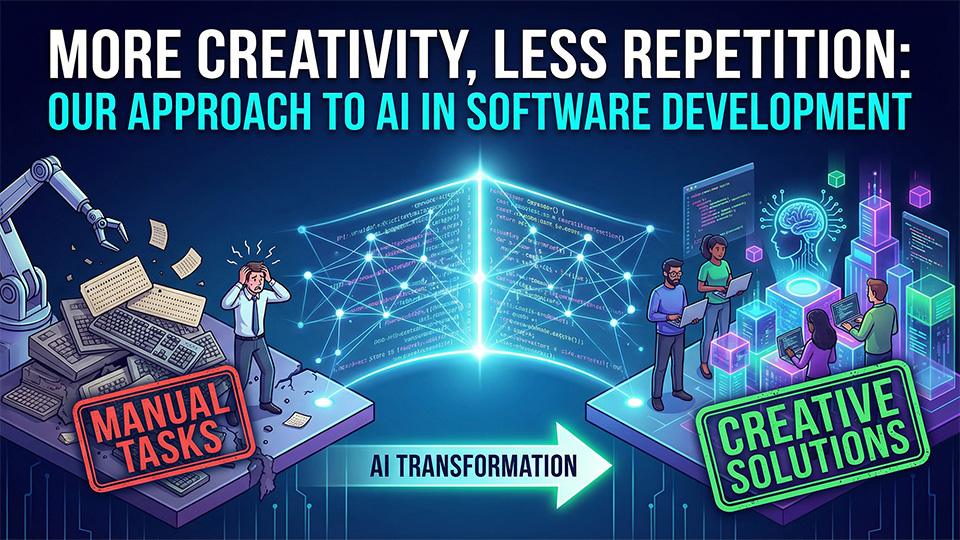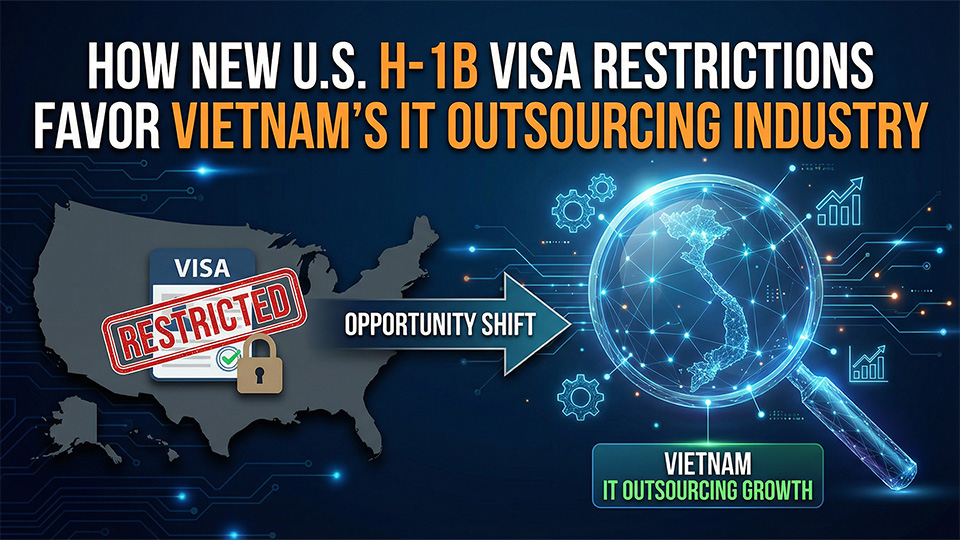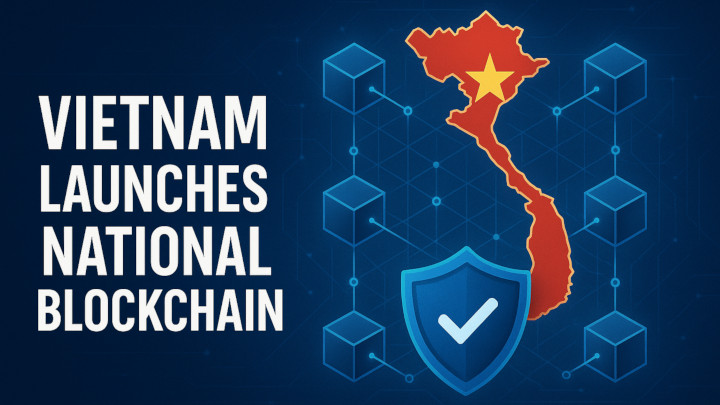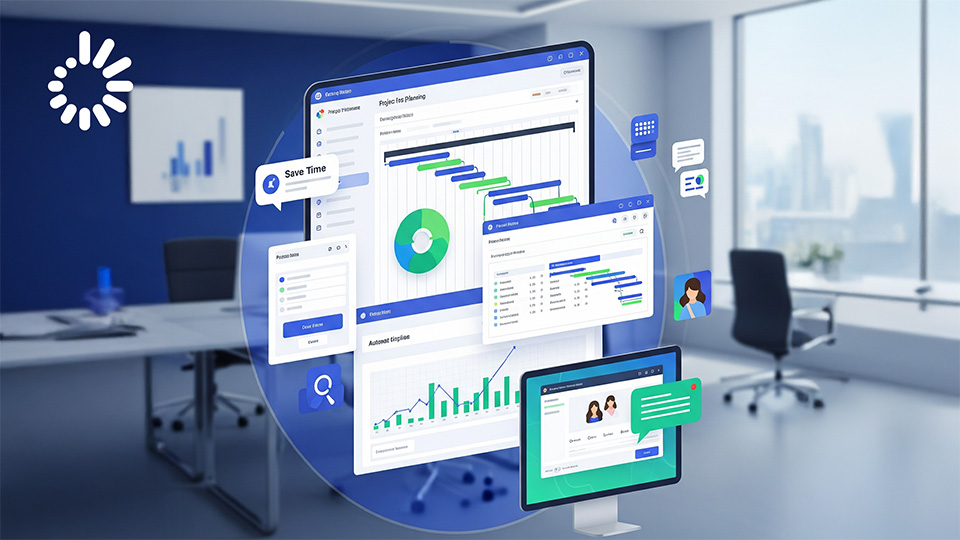February 9, 2025
Top 10 Trends in Supply Chain and Logistics Technology in 2025
The supply chain and logistics industry is undergoing a dramatic transformation, driven by cutting-edge technologies that promise to revolutionize efficiency, security, and sustainability.
In 2024 alone, global supply chain disruptions cost businesses a staggering $1.6 trillion, highlighting the urgent need for innovation.
This article explores the top trends shaping logistics in 2025, from AI-driven automation to blockchain security, offering insights into how businesses can stay ahead in this rapidly evolving landscape.
1. Big Data Analytics and Centralized Data Management
Data is the lifeblood of modern logistics, yet many companies struggle with fragmented information spread across disparate transportation management systems (TMS) and enterprise resource planning (ERP) platforms. This lack of integration leads to inefficiencies, miscommunication, and poor decision-making.
To address this, logistics companies are increasingly turning to centralized data management through data lakes and data warehouses:
- Data lakes store massive amounts of raw, unstructured data, making them ideal for advanced analytics and AI applications.
- Meanwhile, data warehouses offer structured, organized information suited for operational decision-making.
Implementing these solutions effectively eliminates data silos, enhances visibility, and lays the groundwork for scalable growth.
However, data centralization alone is not enough; ensuring data accuracy and consistency is equally critical.
Poor data quality can lead to costly errors, such as incorrect shipping addresses, outdated contacts, or mismatched inventory records. According to Gartner, poor data quality costs businesses an average of $12.9 million per year.
Logistics firms must implement rigorous data-cleansing practices to minimize errors and maintain operational efficiency. Key steps include:
- Standardizing data formats to ensure consistency across systems.
- Removing duplicate entries that can arise from multiple data sources.
- Correcting syntax errors, such as typos in zip codes or product SKUs.
- Leveraging historical data and enrichment algorithms to fill in missing information.
With high-quality, centralized data, logistics companies can fully harness predictive analytics to enhance supply chain visibility.
Key areas where predictive analytics is making a significant impact include:
Fleet Utilization: Reducing idle time and optimizing delivery schedules based on traffic patterns and demand forecasts.
Inventory Management: Preventing overstocking or understocking by predicting demand fluctuations.
KPI-Driven Strategies: Establishing key performance indicators (KPIs) to measure success and identify areas for improvement.
For instance, UPS uses AI-driven predictive analytics to optimize delivery routes, saving the company $400 million annually in fuel and labor costs.
Similarly, Amazon leverages predictive analytics to anticipate customer demand, ensuring that inventory is stocked efficiently across its global network of fulfillment centers.
2. AI and Machine Learning (ML): Driving Operational Efficiency
Artificial intelligence (AI) and machine learning (ML) are revolutionizing logistics by enhancing efficiency, reducing costs, and improving decision-making.
One of the most impactful applications of AI in logistics is demand forecasting. Companies can leverage AI algorithms to analyze past sales data, seasonal trends, and external factors like holidays and economic conditions to anticipate future demand.
This predictive capability enables logistics providers to proactively allocate resources, optimize fleet utilization, and avoid stockouts or overstocking.
A McKinsey study estimated that AI-driven forecasting can reduce errors by up to 50%, significantly enhancing operational efficiency.

Source: McKinsey & Co.
Additionally, scenario planning through digital twins allows organizations to simulate different logistics scenarios before implementing real-world changes.
Digital twins create virtual replicas of supply chain operations, enabling businesses to test various strategies, assess potential risks, and make data-driven decisions.
For example, DB Schenker utilizes AI-driven digital twins to simulate warehouse operations and optimize resource allocation, improving efficiency by 30%.
AI is also transforming transportation and warehouse management through the deployment of autonomous vehicles and robotics. Companies such as UPS and DHL have embraced AI-driven logistics technologies to enhance speed, accuracy, and cost-effectiveness.
UPS ORION (On-Road Integrated Optimization and Navigation): This ML-powered system dynamically reroutes delivery drivers in real-time, reducing fuel consumption and delivery times.
DHL Resilience360: This AI-based platform predicts supply chain disruptions, automates route optimization, and streamlines warehouse automation.
Amazon’s AI Robotics: Amazon uses AI-powered robots to automate sorting, packing, and delivery processes, allowing for twice the throughput in fulfillment centers compared to manual operations.
While AI delivers significant benefits, its implementation must be ethical and transparent. AI models can inherit biases from historical data, leading to unfair decision-making or inefficiencies in logistics operations.
To mitigate these risks, companies should ensure AI transparency, address biases in data and implement robust AI governance.
3. Blockchain: Redefining Transparency and Security

Blockchain technology is revolutionizing supply chain management by providing an immutable and transparent ledger of transactions.
According to the Market Research Future Report, the blockchain supply chain market is projected to grow at a CAGR of 39.19% from 2024 to 2032, highlighting its increasing adoption across industries.
One of the most impactful applications of blockchain is smart contracts, which automate and enforce compliance with predefined rules. This eliminates the need for manual intervention, reducing delays and administrative costs in cross-border logistics.
A notable example is Walmart's Food Trust, a IBM-backed initiative, leverages blockchain to track and trace food products from suppliers to retail stores, ensuring safety and reducing waste.
Beyond cross-border logistics, blockchain also holds significant potential in last-mile delivery and vendor partnerships. By providing tamper-proof tracking, blockchain can help optimize delivery routes, prevent fraud, and enhance trust among logistics partners.
Logchain, for example, is a cutting-edge blockchain-based solution designed to provide secure, transparent, and efficient digital record management. Developed by Dirox, Logchain leverages blockchain technology to enhance data integrity, authentication, and traceability with real-time data sharing.
Additionally, blockchain-powered vendor partnerships allow seamless integration between suppliers and logistics providers, ensuring transparent and efficient transactions.
For instance, Home Depot uses blockchain to resolve disputes with suppliers more efficiently, while Unilever applies blockchain technology to verify ethical sourcing in its supply chain.
4. IoT: The Backbone of Real-Time Logistics
The Internet of Things (IoT) is transforming logistics by enabling real-time tracking, predictive maintenance, and waste reduction.
By attaching sensors, tags, and trackers to shipments, pallets, or containers, businesses gain accurate, real-time data on the location, status, and condition of goods.
This visibility helps in identifying potential issues, coordinating supply chain processes, and optimizing inventory levels before disruptions occur.
The impact of IoT on logistics is substantial. According to the 2023 supply chain report by MHI, 68% of industry leaders expressed a willingness to adopt IoT technology, emphasizing its growing importance in supply chain management.
Furthermore, according to FAO, an alarming 30% to 40% of food was lost before reaching store shelves. However, companies leveraging IoT can significantly reduce waste and improve transportation efficiency by continuously monitoring environmental conditions such as temperature and humidity.
For example, Schneider Electric employs IoT sensors to monitor energy consumption and improve fleet efficiency. According to their 2025 report, this strategy has delivered an absolute reduction of 496,361 tonnes of CO2 emissions compared to 2017, which is a 71% decrease, and a 26,945 tonnes CO2 reduction vs. 2022.

To reach its "Net-Zero ready" goal for these emissions by 2030, the Group uses IoT architectures to keep an eye on and improve energy use, manage stuff and grid infrastructure, handle renewable energy sources and electricity load, and power EVs. This showcases the sustainability benefits of IoT in logistics.
Additionally, the integration of 5G networks is further amplifying the power of IoT in logistics.
With faster and more reliable data transmission, companies can process vast amounts of information in real time, leading to improved decision-making.
For example, IoT-enabled fleet tracking systems powered by 5G provide ultra-low latency communication, ensuring instant updates on vehicle movements and potential maintenance needs.
5. Augmented Reality (AR) and Virtual Reality (VR): Transforming Workflows
Augmented Reality (AR) is revolutionizing warehouse logistics by improving efficiency, reducing errors, and optimizing workflows.
AR-assisted picking and navigation systems provide warehouse workers with real-time digital overlays, guiding them to the correct inventory locations and streamlining order fulfillment.
Studies indicate that AR-assisted operations can lead to a productivity surge of over 40%, significantly minimizing the time spent searching for items.
For example, DB Schenker has successfully implemented AR headsets to guide workers in picking and packing processes, reducing errors and boosting efficiency.
Meanwhile, Virtual Reality (VR) is becoming a game-changer in workforce training for logistics operations. By simulating real-world scenarios in a controlled environment, employees can gain hands-on experience without the risks associated with physical training.
Walmart employs VR headsets to train employees in handling peak-season demands, such as Black Friday sales, helping them prepare for high-stress situations without the actual pressure.
Report shows that VR training improves knowledge retention and test scores by 10% to 15%, while also increasing employee confidence.

Beyond warehouse and training applications, AR and VR are reshaping customer experiences and last-mile logistics.
New research in retail has revealed that engaging with AR-enhanced products increases purchase rates by 94%. Interactive AR displays allow customers to preview products in their environment before buying, reducing return rates and improving satisfaction.
6. Sustainable Logistics and Scope 3 Emissions Tracking
Logistics efficiency and sustainability are closely intertwined, as improving one often enhances the other. Sustainability initiatives are reshaping the logistics industry, introducing eco-friendly strategies that significantly reduce environmental impact.
The year 2025 marks a pivotal moment for sustainability in the logistics sector, driven by growing environmental concerns.
In the US alone, transport-related greenhouse gas emissions account for over 27% of total carbon emissions. With ambitious EU climate targets set for 2040, the transport and logistics sector faces mounting pressure to prioritize and implement sustainability initiatives.
Logistics companies are increasingly leveraging technology to curb their carbon footprint. Some of the key solutions include:
- Route Optimization Software: Reduces fuel consumption and emissions by identifying the most efficient delivery routes.
- Alternative Fuels: Electric and hydrogen-powered trucks are being adopted to replace diesel-powered fleets.
- AI-Powered Predictive Maintenance: Ensures vehicles operate at peak efficiency, reducing unnecessary fuel use and breakdowns.
- Digital Freight Platforms: Match available freight capacity with shipments, minimizing empty miles and improving overall efficiency.
Traditionally, businesses have focused on tracking Scope 1 (direct emissions) and Scope 2 (purchased electricity emissions). However, attention has now shifted toward Scope 3 emissions, which encompass the entire supply chain’s emissions, from suppliers to last-mile delivery.

Although Scope 3 emissions tracking remains voluntary in many regions, regulations are emerging that will soon make it a legal requirement. As companies strive to set ambitious carbon reduction targets, establishing a solid emissions baseline is critical. While Scope 1 and 2 emissions are relatively straightforward to assess, Scope 3 emissions pose a greater challenge due to their complexity.
To effectively track and reduce Scope 3 emissions, companies must adopt a structured approach:
- Supplier Segmentation: Identify and prioritize suppliers based on key factors such as spend, business impact, and emissions contribution.
- Supplier Engagement Programs: Educate suppliers on the importance of Scope 3 emissions tracking and integrate sustainability goals into procurement strategies.
- Carbon Accounting Technologies: Implement hybrid carbon accounting methods that blend primary supplier data with industry benchmarks to improve emissions accuracy.
- Digital Data Collection Platforms: Utilize centralized systems that allow suppliers to input emissions data for seamless integration into sustainability reports.
- Employee Education and Change Management: Train employees on carbon reduction strategies and implement change management frameworks to ensure smooth adoption of new processes.
7. Electrification and Automation
Electrification and automation are redefining the logistics landscape, with electric vehicles (EVs), drones, and autonomous vehicles revolutionizing delivery systems. These innovations are enhancing efficiency, reducing costs, and improving safety, positioning them at the forefront of SCM technology trends.
Autonomous vehicles and drones are equipped with GPS, collision avoidance systems, and advanced flight control tools, enabling precise and secure navigation.
With labor costs accounting for 50-60% of last-mile delivery expenses, automation offers a viable solution for businesses aiming to streamline operations and cut costs.
For instance, the average salary for a driver is $19.81 per hour in the United States, making labor a significant cost factor in logistics.
Currently, the cost of a single package drone delivery is approximately $13.50. However, with advancements in unmanned traffic management systems and sense-and-avoid solutions, this cost is projected to drop to $1.50 to $2 per delivery, making drone-based logistics a cost-effective alternative.
Optimizing logistics is not just about cost savings; it also enhances customer service. Manual planning for deliveries is time-intensive, especially for complex multi-leg transportation routes and fluctuating demand.
AI-driven smart scheduling platforms can integrate vast datasets to optimize fleet management, reducing delays and improving overall service quality.
Despite its potential, the global adoption of automation in logistics faces several challenges:
- Regulatory Hurdles: Government regulations, such as FAA restrictions, have slowed the widespread use of drones in last-mile deliveries.
- Infrastructure Limitations: The deployment of EVs and autonomous fleets requires a robust charging and maintenance infrastructure, which is still underdeveloped in many regions.
- Cybersecurity Risks: As logistics operations become more reliant on AI and IoT connectivity, companies must address vulnerabilities related to data security and hacking threats.
- Workforce Adaptation: Businesses must invest in upskilling their workforce to effectively integrate automation tools while maintaining high-quality service.
Amazon Prime Air, for example, aimed to complete 10,000 drone deliveries by 2023 but has faced regulatory hurdles, completing only 100 due to Federal Aviation Administration (FAA) restrictions.

The company has struggled to meet FAA requirements for safety, airworthiness, and airspace management.
Despite this, Amazon remains committed to refining its drone technology, working closely with regulators, and expanding testing areas. While progress has been slower than expected, Amazon continues to invest in the future of drone delivery, hoping to overcome these challenges and eventually scale the service.
8. Quantum Computing for Logistics Optimization
Traditional computing methods, which rely on silo-based and function-specific optimizations, are struggling to keep pace with ever-evolving disruptions in the industry.
Enter quantum computing—a revolutionary technology with the potential to solve complex routing and supply chain problems at speeds previously unimaginable.
Unlike classical computers, which process information in a linear and binary manner, quantum computers leverage quantum bits (qubits) to perform complex calculations simultaneously. This enables them to analyze and optimize vast datasets at unprecedented speeds, providing real-time coordination across entire logistics ecosystems.
Three Key Use Cases in Quantum Logistics:
1. Quantum Algorithms for Last-Mile Delivery
Quantum computing could provide a breakthrough in real-time global routing optimization, enabling dynamic adjustments that minimize delivery times and fuel consumption.
For example, IBM collaborated with a commercial vehicle manufacturer to test a hybrid classical-quantum computing approach for optimizing last-mile delivery in New York City.
The model optimized deliveries to 1,200 locations while considering 30-minute delivery windows and truck capacity constraints, significantly reducing costs and improving customer satisfaction.
2. Quantum-Enabled Disruption Management
Quantum computing can simulate multiple disruption scenarios in real time, offering data-driven risk and impact analysis. This enables logistics operators to predict potential bottlenecks and react proactively to mitigate delays and cost overruns.
3. Quantum Computing for Sustainable Maritime Routing
Quantum computing can process a vast number of variables simultaneously to optimize ship routing, reduce fuel consumption, and minimize carbon emissions.
Big corps in different industries are slowly adopting this technology. For example, ExxonMobil, in collaboration with IBM Research, has been exploring quantum computing for maritime inventory routing in liquefied natural gas (LNG) shipping.
While quantum computing holds immense promise, widespread adoption in logistics is still in its early stages. Key challenges include:
Hardware limitations: Current quantum computers are not yet powerful enough to handle large-scale commercial applications.
Integration with existing systems: Businesses must bridge the gap between classical and quantum computing methods.
Talent shortages: Quantum expertise remains limited, requiring significant investment in workforce training.
9. Cloud-Based Collaboration Platforms
As global supply chains become more interconnected, organizations require centralized platforms that offer visibility across multiple stakeholders, from manufacturers to distributors and retailers.
Cloud-based solutions eliminate data silos, enhance decision-making through AI-driven analytics, and reduce operational costs by minimizing manual inefficiencies.
Gartner analysts said that more than 85% of organizations will embrace a cloud-first principle by 2025.
In logistics specifically, this shift is driven by the need for flexibility, real-time tracking, and improved risk management in an increasingly volatile logistics environment.
Cloud-based collaboration platforms bring many prominent benefits:
1. Scalability and Cost-Efficiency:
Cloud solutions offer pay-as-you-go pricing models, reducing upfront investments in hardware and software. This allows businesses of all sizes, including medium-sized firms, to scale operations efficiently.
2. Enhanced Global Network Coordination
Cloud-based collaboration fosters seamless interaction between geographically dispersed teams, suppliers, and logistics partners. Real-time data synchronization ensures accurate inventory tracking, optimized routing, and proactive issue resolution.
For instance, Flexport, a cloud-powered freight forwarder, utilizes digital collaboration tools to provide real-time shipping visibility to clients. This results in faster customs clearance and reduced transit times by up to 20%.

3. Improved Risk Mitigation and Supply Chain Resilience
With integrated AI and predictive analytics, cloud platforms help businesses anticipate potential disruptions, such as port congestion or supplier delays.
Automated alerts and dynamic rerouting minimize downtime and ensure supply chain continuity.
While large enterprises have long embraced cloud-based logistics solutions, medium-sized companies are now leveraging these platforms to gain a competitive advantage.
A 2022 report from Gartner indicated that cloud adoption can lead to a 27% increase in productivity for SMEs.
Affordable, modular cloud applications enable mid-market firms to implement AI-driven demand forecasting, automated order processing, and digital freight matching, all of which were previously accessible only to industry giants.
10. Last-Mile Delivery Innovations
The last mile of delivery is often the most complex and expensive part of the supply chain, accounting for up to 53% of total shipping costs.
In cities, traffic congestion, limited parking, and environmental concerns make last-mile delivery increasingly difficult. According to a report by McKinsey, autonomous last-mile delivery could reduce costs by 40% compared to traditional methods.
- Amazon and FedEx have tested autonomous delivery robots, such as Amazon’s Scout and FedEx’s Roxo, designed to navigate sidewalks and deliver packages directly to consumers.
- Nuro, a self-driving delivery startup, has partnered with retailers like Kroger and Domino’s to deploy autonomous vehicles for grocery and food delivery.
While urban areas face congestion, rural communities and underserved locations struggle with long delivery times and high transportation costs. New technologies and innovative approaches are bridging this gap.
- UPS Flight Forward has used drones for medical deliveries in remote regions of the U.S.
- Starship Technologies operates autonomous sidewalk robots that serve small towns and university campuses, ensuring efficient deliveries in lower-density areas.
Conclusion
The key logistics trends of 2024 center around sustainability, efficiency, and overcoming adoption challenges. Businesses are rapidly integrating emerging technologies such as quantum computing, AI-driven automation, and cloud-based collaboration to optimize supply chains while addressing environmental concerns.
Looking ahead, forward-thinking strategies will be essential for staying competitive. Companies must invest in cybersecurity, enhance data-driven decision-making, and tailor innovations to regional market conditions. The growing role of quantum computing in logistics optimization and secure, real-time global coordination will further revolutionize the industry.
Contact Dirox today to explore cutting-edge solutions to drive the future of your business!






























.svg)













